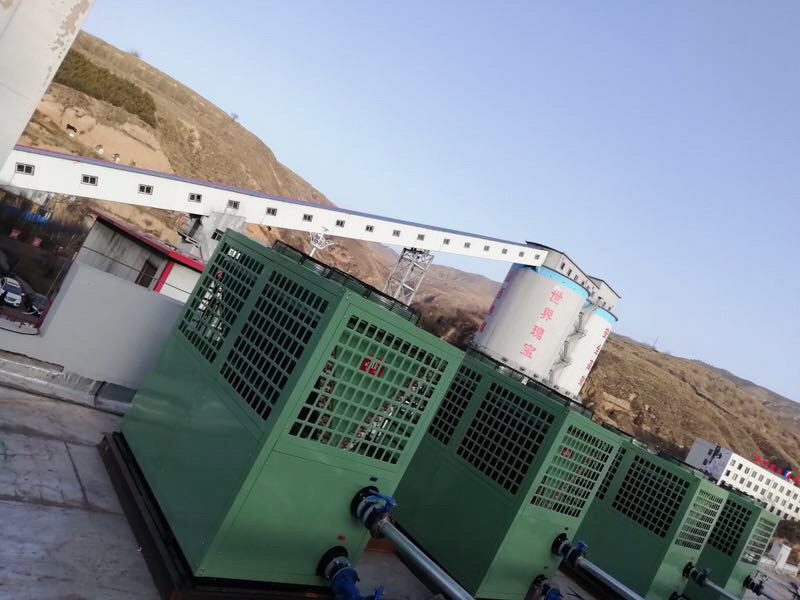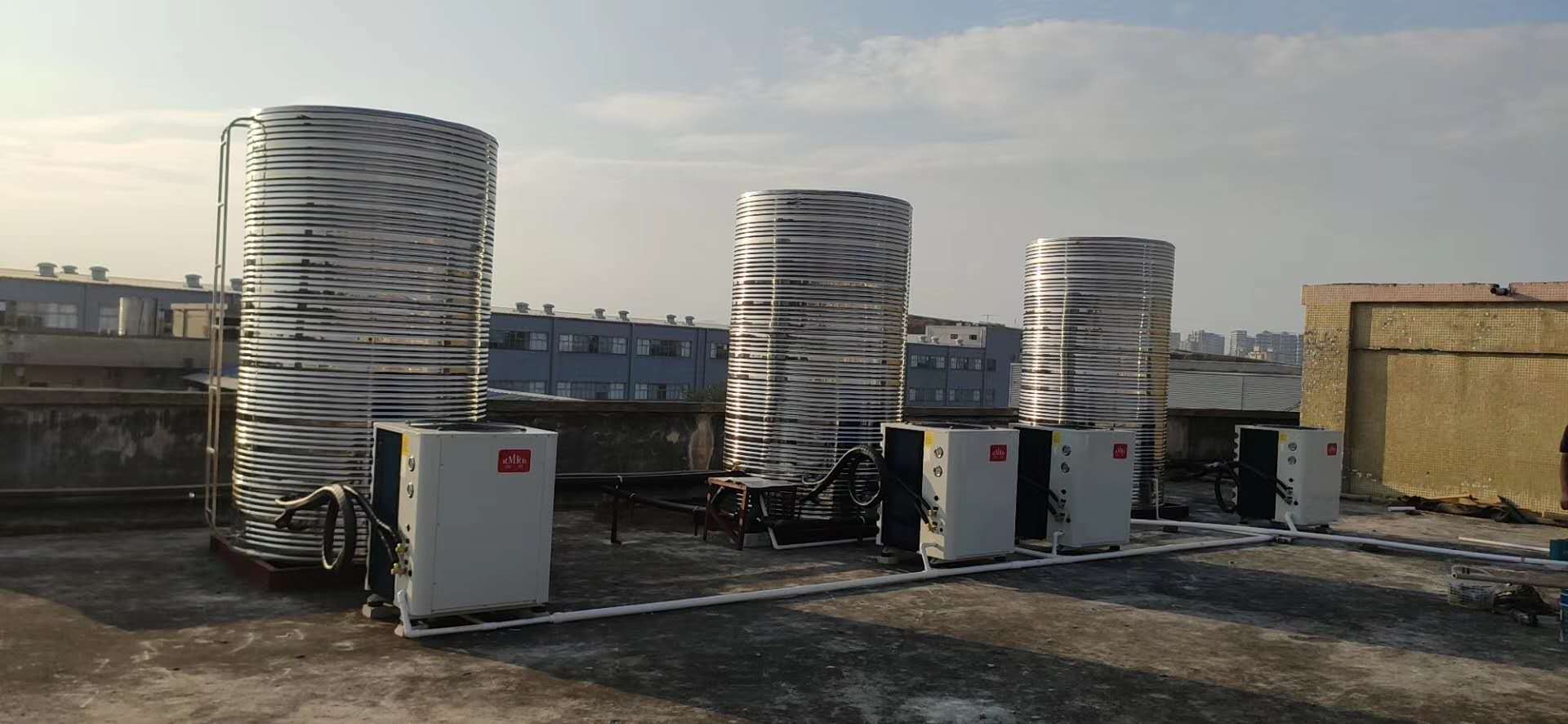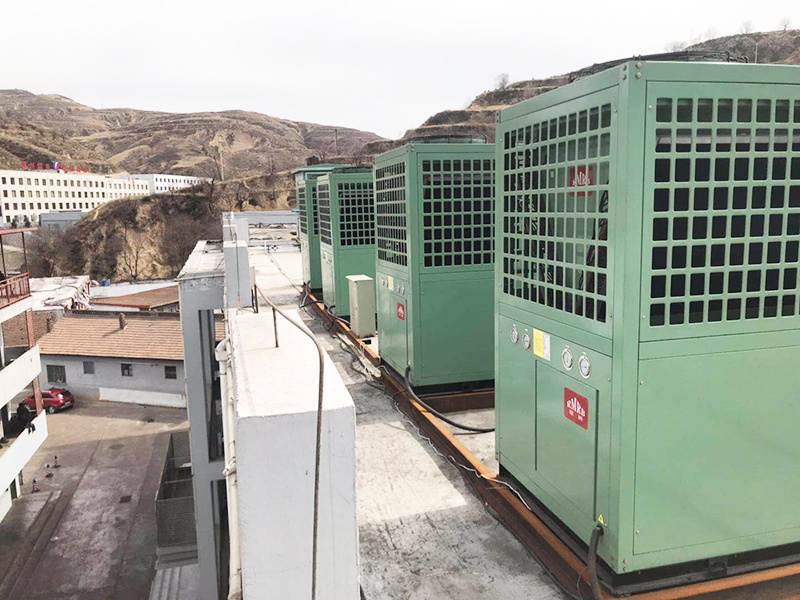Success Stories
Air source heat pump installation plan design and construction attention items
Published on:
2023-04-20
Air source heat pump units are gradually favored by users in terms of clean energy heating! Many people with clean energy heating equipment such as air source heat pumps have relatively low awareness of its working principle, design scheme, heating load, and installation precautions. The installation is installed, but I don’t know if there is an installation team. Below, Power Air will introduce the installation plan and precautions of the air source heat pump equipment in detail.

1. Selection of the installation location of the air source heat pump unit
The working principle of the air source heat pump unit is to produce heat for the room by exchanging energy with the air, so the air source heat pump main unit must be installed in a place with smooth air, and it is not suitable for installation in a small patio or a place surrounded by enclosures. The air source heat pump host mainly for heating should be installed in a sunny place. The platform or place where the air source heat pump host is installed must have room for maintenance. The air source heat pump system consumes a lot of power, especially when electric auxiliary heat is installed, the power will increase, so it is necessary to pay attention to whether the capacitance is sufficient during design. When the water pump of the air source heat pump host is external, the heat pump host must have interlocking control with the water pump and cannot operate in isolation.
2. How to match the heating capacity of the air source heat pump with the building load
The maintenance time of indoor heating comfort is mainly due to the matching of the heating capacity of the air source heat pump host with the heat load of the building, and is also related to the form of the terminal equipment and the total heat dissipation. The heat load of the building determines the type selection of the heat pump main unit. When selecting the central heating main unit of a conventional large building, the simultaneous use coefficient of less than 1 is generally considered. For residential buildings with an area of 100m2 , it is not recommended to consider the simultaneous use coefficient. If conditions permit , it is recommended that the heat pump host be selected according to 110% to 120% of the building heat load . In addition, the selection of the air source heat pump host is also related to the selection of the terminal equipment. If the terminal equipment is a radiator, it is not recommended to choose a small heat pump host; if the terminal equipment is a fan coil unit, the heat pump host can be appropriately selected. 85% of the building heat load . The selection of the air source heat pump host is relatively complicated, and it must be related to the insulation of the building, the structure type, the use of the heating system, and the outdoor environment of the application site.
3. Design of auxiliary heat source for air source heat pump system
When the outdoor environment is extremely harsh, the efficiency of the air source heat pump main unit will decrease. In addition, the defrosting of the heat pump main unit at low temperature will also affect the heating capacity of the system, which will cause the indoor temperature to drop and make the indoor comfortable. degree drops. To solve this phenomenon, generally in the system design, a certain amount of auxiliary heat source should be considered as a supplement. The main forms of auxiliary heat sources include electric heaters, natural gas boilers, and solar auxiliary heat sources. Which auxiliary heat source to use should be determined according to the site conditions of each household and the user's usage. Because electric heaters are easy to use and easy to maintain, electric heaters are usually used as a common auxiliary heat source.
When using an electric heater as an auxiliary heat source, pay attention to the following points:
( 1 ) The auxiliary electric heater should be interlocked with the heat pump host, and the auxiliary electric heater must not be started when the system is not running;
( 2 ) When the system water temperature drops to a certain temperature, the auxiliary electric heater should start automatically;
( 3 ) The system temperature should be designed with a maximum value. When the system temperature is higher than the set value, the auxiliary electric heater should stop running;
( 4 ) The capacity of the auxiliary electric heater is generally 20% to 30% of that of the heat pump host .

4. Design of water capacity of air source heat pump system
When the water capacity of the air source heat pump system is small, the air source heat pump host will start and stop frequently, and the frequent start and stop of the heat pump host will cause an impact on the power grid. When the heat pump host defrosts, it will also cause a sharp drop in the system water temperature, affecting indoor comfort. To increase the water capacity of the system is to increase the heat capacity of the system. The main solutions are as follows:
- Add hot water tank. Add a hot water tank to the system. The volume of the hot water tank should be determined according to the site conditions. The location of the hot water tank is recommended to be at the water outlet of the heat pump main unit, so that the water temperature will not drop too much.
- Increase the pipe diameter of the system. Enlarging the pipe diameter of the system does not fundamentally change the heat capacity of the system, but only delays the reduction of the indoor temperature.
( 3 ) Increase the auxiliary heat source of the system. The auxiliary heat source does not increase the water capacity of the system, but changes the heat capacity of the system. When the water temperature of the system drops, the auxiliary heat source performs auxiliary heating, which will also increase the water temperature of the system and ensure that the indoor temperature will not drop quickly. The auxiliary heat source is recommended to be installed at the water outlet of the heat pump main unit, so as to ensure that the system outlet water temperature will not drop sharply.
5. Precautions during construction of the air source heat pump unit installation system. In addition to following the relevant national norms and standards, some special installation precautions should also be paid attention to.
( 1 ) When the air source heat pump main engine is installed on the roof, the main engine foundation should be located on the building column or load-bearing beam; when the air source heat pump main engine is installed in the outdoor open space, the main engine foundation should be firm and solid; There should be a shock absorber.
( 2 ) The distance between the air source heat pump main engine support should not be less than 300mm , that is, there must be a certain distance between the bottom of the air source heat pump main engine and the foundation.
( 3 ) There must be a soft connection between the air source heat pump host and the pipeline.
( 4 ) The air source heat pump system should be equipped with a water flow switch. When the water flow in the system is insufficient, the host will automatically shut down.
( 5 ) The air source heat pump host must have certain protective measures, mainly to prevent the heat pump host from causing harm to children.

6. Water pipe installation and insulation
( 1 ) The water pipes of the air source heat pump system mainly include galvanized steel pipes and plastic water pipes. The distances between the supports and hangers of these two water pipes are different and should be selected according to the actual situation.
( 2 ) When the air source heat pump system has a built-in water pump or an external water pump, a filter must be installed on the pipe section of the water pump suction to ensure the normal operation of the system.
( 3 ) When the pipeline is insulated, it must be noted that there is no gap between the insulations, so as to avoid air infiltration, resulting in heat loss.
( 4 ) When the pipe is used as a support and hanger, do not form "thermal bridges" and gaps to avoid heat loss.
7. Electrical installation and line laying
( 1 ) The system control box should be installed in an easy-to-operate place, and the distribution box should be installed indoors for easy maintenance.
( 2 ) The power line between the distribution box and the heat pump main unit should be protected by steel pipes, especially not to be touched by children.
( 3 ) The selection of the heat pump host cable and power distribution switch should be appropriately enlarged.
8. System flushing and system pressure
( 1 ) After the system is installed, flush the system. When flushing, the water flow must not pass through the heat pump host, hot water tank and terminal equipment.
( 2 ) After the system is flushed, a pressure test shall be carried out on the system, and the test pressure and pressure drop shall meet the design requirements.
( 3 ) When flushing the system, open the exhaust valve at the same time, exhaust the water while flushing, and turn on the water pump to run when the system is full, and pay attention to continuous exhaust and water replenishment. The air source heat pump unit is not only environmentally friendly and energy-saving, but also has the characteristics of convenient maintenance and flexible application. It is loved by the majority of users. As long as it is accurately designed and carefully constructed, a satisfactory heating effect will be obtained. The air source heat pump heating system can not only contribute to the blue sky in the north, but also improve the living conditions of rural residents, and the household air source heat pump system is bound to flourish.


